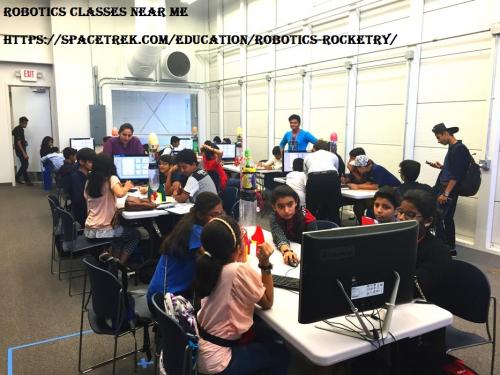Making Robotics a Classroom Experience

In the ever evolving world of supply chain
management, the nineteenth century showed the way to assembly line where
workers could perform their respective tasks faster and manufacturing sped up.
Since then scientists have worked on creating mechanisms to solve the
challenges of production, designing and time-management with innovations in
limbic machines. Robotic science is a revolution that consummates science,
technology, engineering and mathematics with other disciplines to create
sophisticated smart designs to help human beings both in industrial and mundane
challenges.
Robotics as a discipline could be understood as a
science of building robots. The term ‘robot’ comes from Czech word robotawhich
means forced labor. Their usage is high in industries like construction,
operation, control, sensory feedback and processing of information etc. It’s
believed that the ever-increasing usage of robots has given rise to loss of
jobs because most of the industries may replace human labor with robots.
However, such concerns are unfounded and here we are going to discuss why
inculcation of robotics in school curriculum and teaching the subject in
schools could be useful and keeping such doubts at bay.
Learning Robotics in School
In the times of information revolution decadal
changes are faster than ever before. Moreover having records of human
intelligence has become difficult. When glaciers are melting fast and natural
ecosystems on earth are transforming, technological solutions to mitigate
natural disasters have become an imperative. United Nations has given
Sustainable Development Goals with a vision that smart use of technology can
play a greater role in realizing its plan. Elementary and middle school is the
period to introduce students to the challenges being faced by our planet and
consequently by the humanity. The
solution has to come from multidisciplinary approach where robotics can play a
great role. Students who grow up learning the applications of robots will have
an expertise in developing path-breaking technologies in a much quicker and
efficient way than the regular mechanical approach.
Applications of Learning Robotics
Robots can carry out complex series of actions as
they are automatic and programmable. Learning robotics can help create
alternatives of natural resources which are on a verge of extinction and
utilize this knowledge to even recreate them. Robots can help create adaptable
technologies in manufacturing, and healthcare etc.
Development of robotics has given a way to develop
state-of-the art designs in space science. Unmanned robotic missions are
carried out by space exploration agencies in order to not only reduce life risk
but also to gather accurate and error free data. The world is dealing with
various natural calamities which are creating food crisis. Agriculture is
another area where robots are needed. According to UN the world population will
rise from 7.3 billion at present to 9.7 billion in 2050 plunging us into
massive food availability challenge that has already found its beginnings
today. Agricultural robots may help increase production yields. They could be
used to optimize weather information and intensive farming. Areas where they are
being currently used include harvesting and picking, weed control, mowing,
pruning, sorting, packaging and utility platforms etc.
Robotics is an industry which is useful for its own
growth so that it could be implied to other areas. Introducing students to
challenges where robotics is useful will make education more realistic.
Robotics and STEM Education
A robotics class makes a comprehensive
interdisciplinary session of STEM education. Robotic activities during schools
help students learn coding, programming and envisioning challenges to be
averted.
Robotics has become an essential part of teaching
STEM at schools. Educators across the globe are developing robotics modules to
complement the curriculum while reshaping education to suit the needs of the modern
day and age. Designs created by students in these classes could be a
manifestation of immediate requirements of various cultures and in turn would
be useful to mainstream STEM education.
How to Learn Robotics
School ideally equips students with basics of all
the subjects so high school is a time when students begin to make decisions
about subjects from a career perspective. So exposing them to robotics as a
discipline could be effectively done in middle school so that they develop
interest and have enough time to weigh pros and cons of it as a study and
career choice. Teaching robotics in schools needs an age appropriate curriculum
and it requires expertise for which STEM education services could be sought.
Space Trek is a STEM education service provider that
takes care of all the essential elements for a school robotics curriculum. An
ideal robotics curriculum should include instructions of coding, programming,
designing and testing. With its in-house 3-D printed robot components,
electronics, and software, it provides instructor-support and teacher training
sessions. . Space Trek also conducts 3-day and 5-day robotics camps at its
headquarters at Kennedy Space Center Visitor Complex in Florida.
Post Your Ad Here
Comments